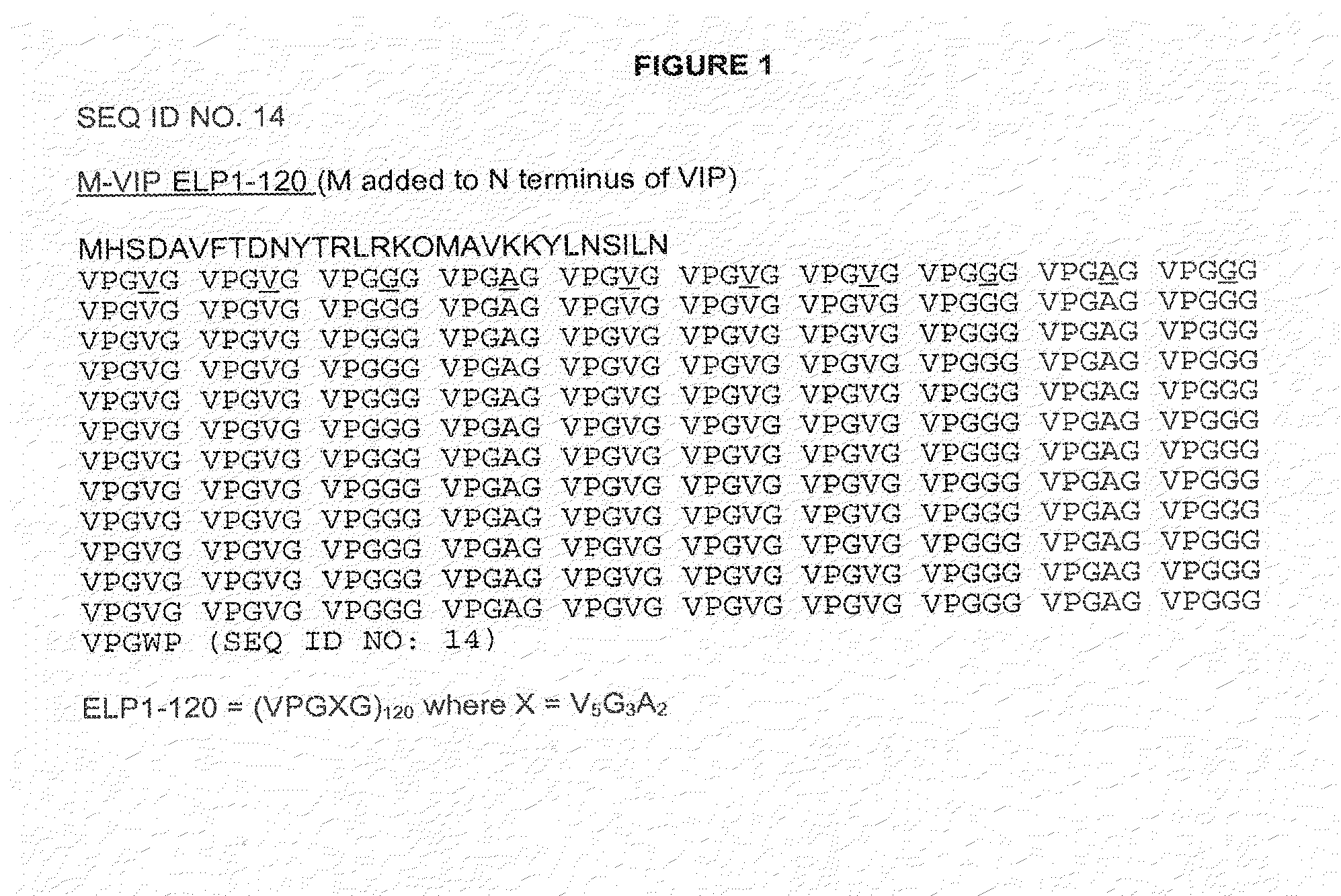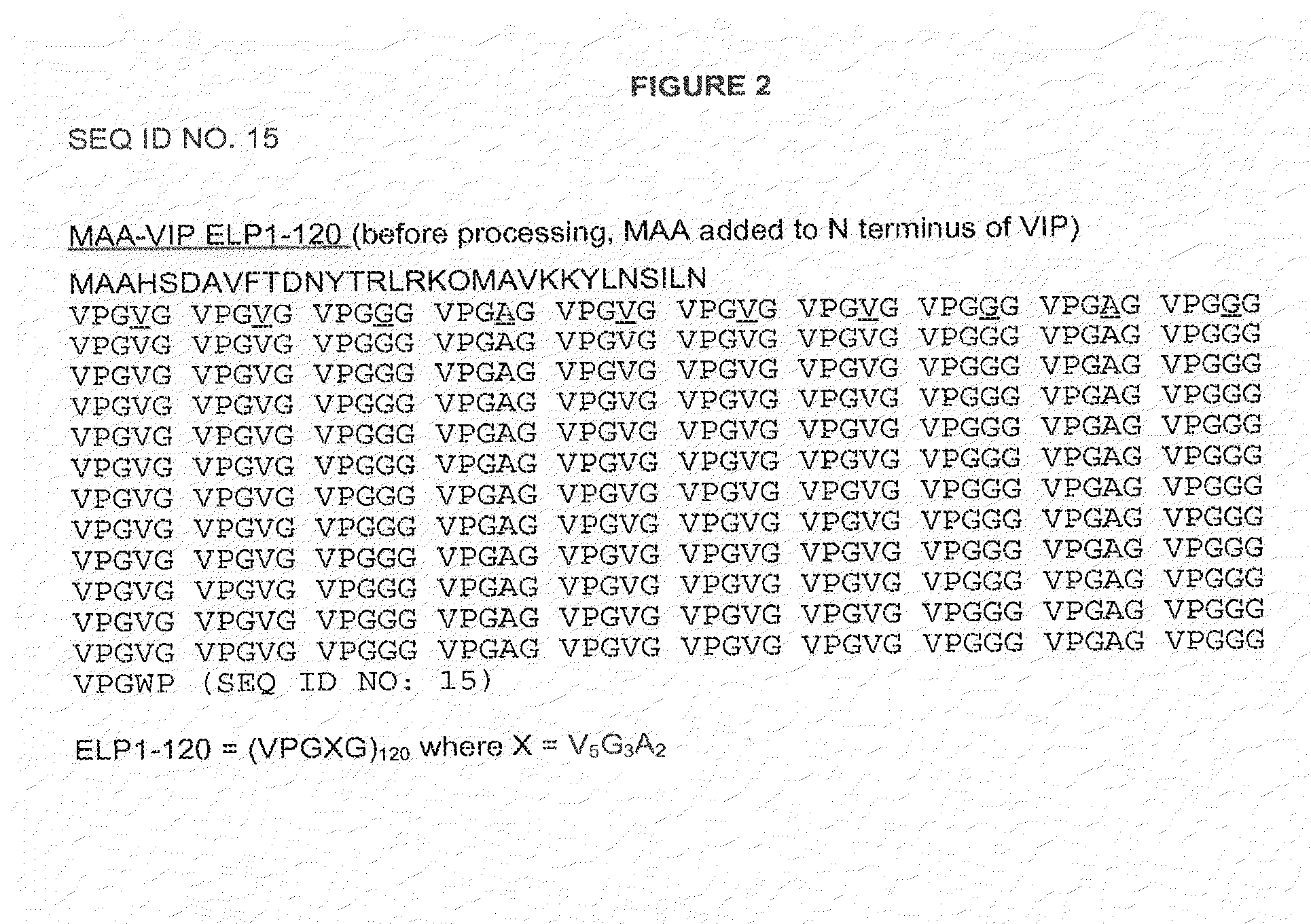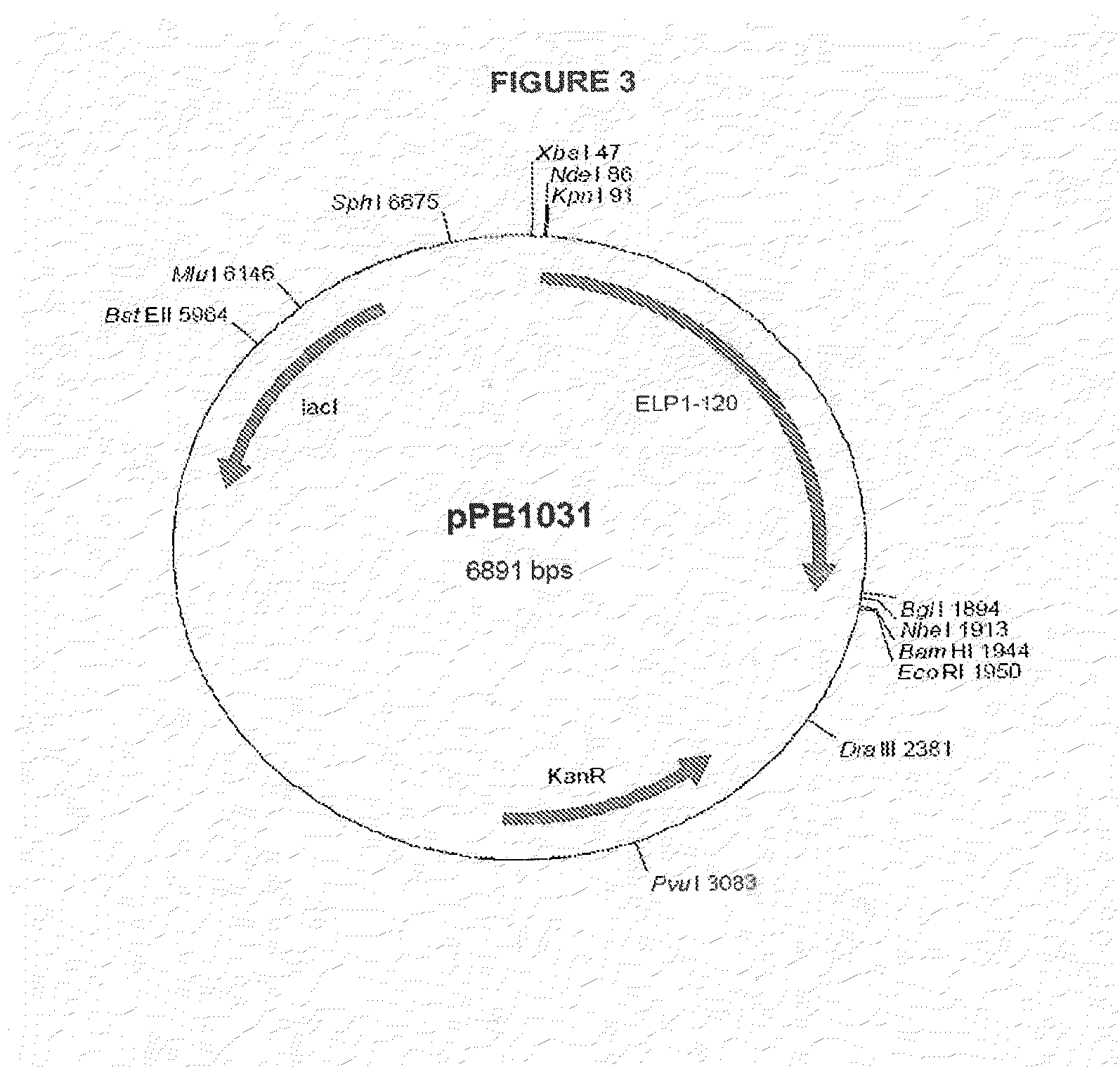Use of modified vasoactive intestinal peptides in the treatment of hypertension
a vasoactive intestinal peptide and hypertension technology, applied in the direction of hormone peptides, peptide/protein ingredients, drug compositions, etc., can solve the problems of increased risk of cardiovascular complications, aneurysms, heart failure, etc., to prolong the half-life or persistence of the circulatory system, enhance the biological potency, and modify the receptor binding profile
- Summary
- Abstract
- Description
- Claims
- Application Information
AI Technical Summary
Benefits of technology
Problems solved by technology
Method used
Image
Examples
example 1
Cloning of VIP-ELP Constructs
[0119]The DNA sequence for the VIP peptide was as described in Simoncsits et al. (Eur. J. Biochem. 1988, 178(2):343-350, which is herein incorporated by reference in its entirety for all purposes), except that residue 17 was the native methionine and did not have either of the described C-terminal extensions.
[0120]Two Initial variants were made, one with a methionine at the N-terminus, due to the required ATG start codon, (PB1046) and one with the tripeptide MAA at the N-terminus (PB1047). The methionine on PB1046 would normally be removed by methionine aminopeptidase (MA) but as histidine is the second residue and one of the least favored amino acids at this position for MA, the methionine is not removed. The methionine on PB1047 was removed to leave AA, which can then be removed in vitro or in vivo by DPPIV to give the histidine as the N-terminal residue. The VIP DNA sequence was cloned into vector pPB1031 (see FIG. 3) carrying the ELP1-120 DNA sequenc...
example 2
Activity of Modified VIP-ELP Fusion Protein In Vitro
[0123]To measure the in vitro biological activity and potency of VIP or VIP-ELP fusion proteins, a cell-based bioassay was used. The assay measures the increase in intracellular cyclic adenosine monophosphate (cAMP) concentration in response to treatment with VIP or VIP-ELP fusion proteins in Chinese Hamster Ovary (CHO) cells that have been engineered to express either the human Vasoactive Intestinal Peptide Receptor 2 (VPAC2) or the human Vasoactive Intestinal Peptide Receptor 1 (VPAC1). Both VIP and VIP-ELP fusion proteins can stimulate production of cAMP in these cells, indicating that the fusion proteins retain the ability to bind and activate the receptor. Since the amount of cAMP accumulation in cells after receptor-mediated ligand binding and activation Is directly proportional to the amount of intact peptide or fusion protein present, the assay can be used to determine bioactivity and relative potency.
[0124]In this example,...
example 3
Blood Pressure Effect of VIP-ELP Fusion Protein
[0126]The activity of the modified VIP-ELP fusion protein PB1047 was also tested in vivo. Specifically, effects of VIP-ELP fusion protein on blood pressure were tested. Spontaneously hypertensive rats were treated subcutaneous with PB1047 (10 mg / kg) or buffer control and their blood pressures were measured at several points after administration of the fusion protein. Five animals were used for each group and the graphs show the average and the standard deviation. PB1047 significantly reduced systolic and diastolic blood pressure in these animals for at least 12 hours post administration (see FIG. 8), indicating that the VIP-ELP fusion protein is active, and can be potentially used as pharmaceuticals in treating VIP-related diseases.
PUM
| Property | Measurement | Unit |
|---|---|---|
| diastolic pressure | aaaaa | aaaaa |
| diastolic pressure | aaaaa | aaaaa |
| molecular weight | aaaaa | aaaaa |
Abstract
Description
Claims
Application Information
 Login to View More
Login to View More - R&D
- Intellectual Property
- Life Sciences
- Materials
- Tech Scout
- Unparalleled Data Quality
- Higher Quality Content
- 60% Fewer Hallucinations
Browse by: Latest US Patents, China's latest patents, Technical Efficacy Thesaurus, Application Domain, Technology Topic, Popular Technical Reports.
© 2025 PatSnap. All rights reserved.Legal|Privacy policy|Modern Slavery Act Transparency Statement|Sitemap|About US| Contact US: help@patsnap.com



